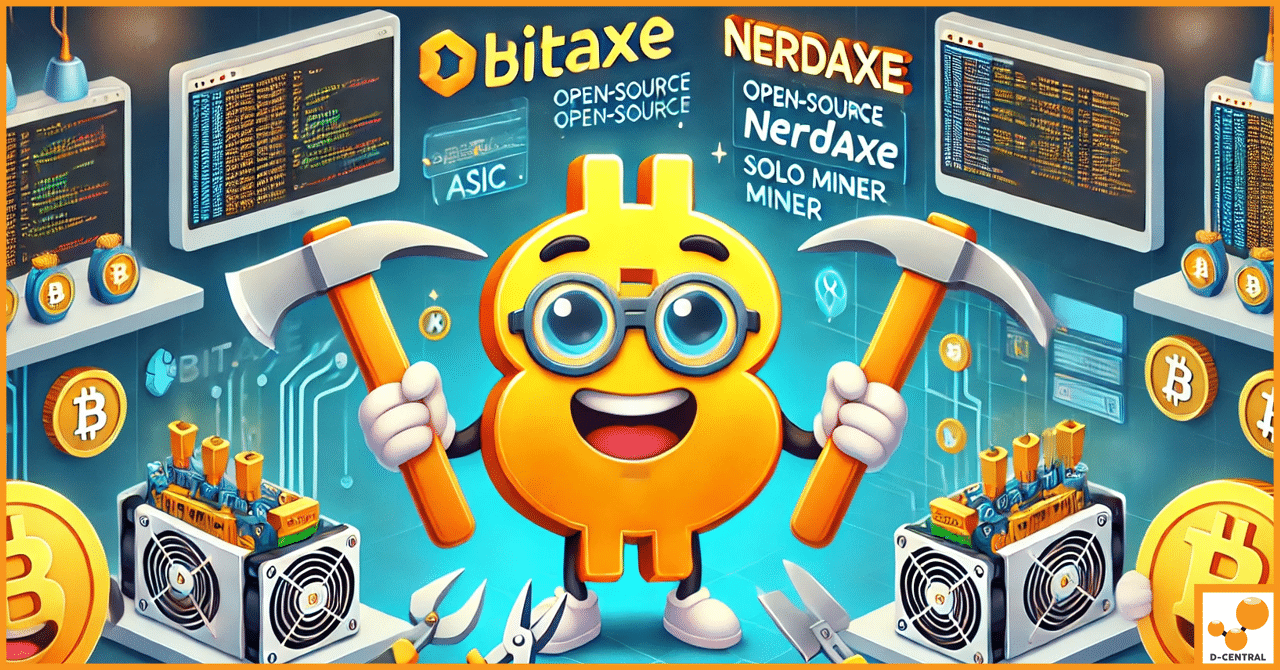
Essential Questions to Ask Your Managed Hosting Provider for Optimal Bitcoin Mining Operations
In the dynamic world of Bitcoin mining, the choice of a managed hosting provider is a pivotal decision that can
4479 Desserte Nord Autoroute 440, Laval, QC H7P 6E2

In the ever-evolving landscape of digital currencies, Bitcoin stands as a pioneering force, reshaping how we perceive and engage with financial transactions in the digital age. At the heart of Bitcoin’s revolutionary impact lies its transaction mechanism – a complex, decentralized process that has become the backbone of this digital currency’s ecosystem. These transactions are not just mere exchanges of value; they represent the embodiment of a new era of financial freedom and autonomy, free from traditional banking systems.
However, as with any groundbreaking technology, there are challenges and learning curves. One such challenge, commonly encountered by users, is the issue of ‘stuck’ Bitcoin transactions. These occur when a transaction fails to get confirmed by the network and remains in a state of limbo. This situation can be perplexing and frustrating, especially for those new to the Bitcoin network. The reasons behind these delays are multifaceted, ranging from network congestion to fee-related issues, each playing a critical role in the transaction’s journey through the Bitcoin blockchain.
Understanding why Bitcoin transactions get stuck is crucial for anyone navigating this digital currency space. It’s not just about the inconvenience of delayed transactions; it’s about grasping the nuances of a system that is redefining the future of money. As we delve deeper into this topic, we aim to unravel the complexities behind these delays, offering insights and solutions to effectively manage and resolve stuck Bitcoin transactions. This knowledge is not just a tool for troubleshooting; it’s an essential part of becoming a savvy participant in the world of Bitcoin.
A ‘stuck’ Bitcoin transaction typically refers to a transaction that has been broadcast to the Bitcoin network but remains unconfirmed for a prolonged period. Unlike a traditional bank transfer, a Bitcoin transaction becomes final only when it is confirmed and added to the blockchain, a public ledger of all transactions. When a transaction fails to achieve this confirmation within an expected timeframe, it is considered ‘stuck’. This state of limbo can be both confusing and concerning for users, as their funds are essentially in a state of suspension.
To fully grasp the concept of stuck transactions, one must understand the basics of the Bitcoin network and its transaction mechanics. Bitcoin operates on a decentralized network of computers, also known as nodes, which validate and record transactions on the blockchain. Each transaction consists of inputs and outputs; inputs refer to where the funds are coming from, typically a previous transaction’s output, while outputs designate the recipient and the amount.
When a transaction is initiated, it is broadcast to the network and enters the mempool (memory pool), a holding area for unconfirmed transactions. Miners, who are responsible for creating new blocks in the blockchain, select transactions from the mempool to include in these blocks. Each block represents a set of confirmed transactions, and once a transaction is included in a block, it is considered confirmed.
Several factors can lead to a Bitcoin transaction getting stuck, with network congestion and scalability issues being the most common.
Understanding these factors is crucial for anyone engaging in Bitcoin transactions. While the decentralized nature of Bitcoin offers numerous advantages, it also brings unique challenges, such as the possibility of experiencing stuck transactions. In the following sections, we will explore practical solutions and strategies to mitigate these issues, ensuring a smoother experience in the Bitcoin network.
In the Bitcoin network, transaction fees play a pivotal role in the processing and confirmation of transactions. Unlike traditional banking systems, where fees are often fixed or percentage-based, Bitcoin transaction fees are not set by the network but are instead determined by users. These fees are used as incentives for miners, who validate and confirm transactions by including them in a new block on the blockchain.
A Bitcoin transaction fee is calculated based on the size of the transaction in bytes, not the value of the transaction in Bitcoin. This means that the complexity and the data size of the transaction, rather than the amount being transferred, determine the fee. Users have the option to set a higher fee to expedite their transaction or a lower fee if they are not in a hurry. However, during times of high network activity, setting a higher fee becomes crucial to avoid delays.
Fee density, or fee rate, is a critical concept in understanding transaction prioritization in the Bitcoin network. It is measured in satoshis per byte (sat/B), where a satoshi is the smallest unit of Bitcoin. Fee density represents the fee paid relative to the size of the transaction. Transactions with a higher fee density are typically picked up and confirmed faster by miners, as they are more profitable.
The impact of fee density on transaction priority is significant. During periods of network congestion, transactions with low fee densities may get stuck in the mempool for an extended period, as miners prioritize transactions with higher fee densities. This prioritization is purely economic, as miners aim to maximize their profits by confirming transactions that offer higher fees for the space they occupy in a block.
Effectively managing transaction fees requires a proactive approach, especially in a fluctuating market like Bitcoin. Here are some strategies for real-time fee monitoring and management:
By understanding and strategically managing transaction fees, users can significantly enhance their chances of timely confirmations, mitigating the risk of transactions getting stuck due to low fee density. This knowledge is essential for anyone regularly transacting in Bitcoin, ensuring a more efficient and predictable experience.
The mempool, short for memory pool, is a critical component in understanding Bitcoin transaction delays. It serves as a waiting area for all unconfirmed transactions before they are picked up by miners for confirmation. Each node on the Bitcoin network maintains its own version of the mempool, which can vary in size and content.
When a transaction is broadcast to the network, it first lands in the mempool. The size of the mempool fluctuates based on the number of transactions waiting to be confirmed and the capacity of recent blocks. During times of high transaction volume, the mempool can become congested, leading to longer waiting times for confirmation.
Miners select transactions from the mempool to include in the next block. This selection is not random; it is influenced by the transaction fees set by users. Transactions with higher fees are more likely to be selected first, as they are more profitable for miners. This process underscores the importance of setting an appropriate fee, especially during periods of high network activity.
Miner preferences play a significant role in the confirmation of transactions. Miners are incentivized to prioritize transactions that offer higher fees per byte. This preference leads to a competitive environment where users bid against each other through fees to get their transactions confirmed promptly.
The impact of miner preferences becomes particularly evident during network congestion. Transactions with lower fees may remain unconfirmed for extended periods, as miners opt for more lucrative transactions. This situation underscores the need for strategic fee setting and highlights the limitations of the Bitcoin network in terms of scalability and transaction throughput.
To address the limitations of the Bitcoin blockchain and improve transaction efficiency, several Layer 2 solutions and off-chain protocols have been developed. These solutions aim to reduce the burden on the main blockchain by handling transactions off-chain or through additional layers built on top of the Bitcoin blockchain.
These Layer 2 solutions and off-chain protocols represent significant advancements in managing Bitcoin transactions more efficiently. By leveraging these technologies, users can experience faster and more cost-effective transactions, alleviating some of the challenges associated with transaction delays on the main Bitcoin network.
Navigating the complexities of the Bitcoin network can be challenging, especially when dealing with stuck transactions. Fortunately, there are several practical solutions available to users. This section provides a step-by-step guide on using some of these methods, including Replace By Fee (RBF), Child Pays for Parent (CPFP), transaction accelerators, and browser-based utilities.
Replace By Fee (RBF) is a protocol that allows you to replace a stuck transaction with a new one that includes a higher fee, increasing the likelihood of it being picked up by miners.
Child Pays for Parent (CPFP) is a method used when you can’t directly increase the fee on the original transaction.
Transaction accelerators are services offered by some mining pools. They prioritize your transaction in return for a fee.
Navigating the world of Bitcoin transactions extends beyond understanding the network’s mechanics; it also involves choosing the right wallet. Bitcoin wallets play a crucial role in transaction management, and the features they offer can significantly impact your experience, especially when dealing with stuck transactions. This section provides an overview of different types of Bitcoin wallets and their features related to transaction management.
The wallet you choose can significantly impact your ability to manage transactions effectively. For instance, a hardware wallet with RBF and CPFP support offers more flexibility in dealing with stuck transactions compared to a basic web wallet. Advanced users might prefer software wallets with customizable fee options and detailed transaction information, while beginners might opt for simpler wallets with more automated settings.
In summary, the choice of wallet plays a pivotal role in how you manage your Bitcoin transactions. It’s important to select a wallet that not only meets your security needs but also provides the necessary features to effectively handle transaction delays and other issues that may arise in the dynamic environment of Bitcoin transactions.
Navigating the Bitcoin network efficiently requires not only a reactive approach to solving issues like stuck transactions but also proactive measures to prevent such occurrences. By understanding and implementing best practices, users can significantly reduce the likelihood of transaction delays. This section offers tips on setting appropriate transaction fees, best practices for avoiding transaction delays, and tools for monitoring network conditions.
By adopting these preventive measures and best practices, users can significantly enhance their experience with Bitcoin transactions, minimizing delays and ensuring smoother, more predictable interactions with the network.
The landscape of Bitcoin transactions is continuously evolving, shaped by technological advancements, user demands, and the inherent challenges of a growing network. As Bitcoin cements its position in the financial world, addressing issues like transaction delays becomes increasingly crucial. This section discusses the potential developments in blockchain technology that aim to enhance the efficiency and scalability of Bitcoin transactions, with a focus on innovations like the Lightning Network and Liquid Sidechain.
Bitcoin, since its inception, has undergone significant changes. Initially viewed as a digital currency for small, peer-to-peer transactions, it has evolved into a digital asset often likened to ‘digital gold’. This evolution has brought challenges, particularly in scalability and transaction efficiency. The Bitcoin community continues to explore solutions that balance security, decentralization, and scalability.
One of the most promising developments in the realm of Bitcoin transactions is the Lightning Network. This Layer 2 protocol operates on top of the Bitcoin blockchain and enables instant, low-cost transactions. It achieves this by creating a network of payment channels that allow for transactions to occur off-chain, with the final settlement being recorded on the Bitcoin blockchain.
The Liquid Network is another notable innovation, functioning as a Bitcoin sidechain. It is primarily designed for traders and exchanges, offering faster, more confidential transactions and the issuance of digital assets.
As blockchain technology continues to advance, we can anticipate further innovations aimed at enhancing the Bitcoin transaction experience:
The future of Bitcoin transactions is poised for significant advancements, with technologies like the Lightning Network and Liquid Sidechain leading the charge. These developments not only promise to address current limitations but also open up new possibilities for Bitcoin’s role in the broader financial ecosystem.
Navigating the dynamic and sometimes challenging landscape of Bitcoin transactions requires both knowledge and proactive management. This comprehensive guide has explored various strategies and tools to effectively manage and resolve stuck Bitcoin transactions, highlighting the importance of understanding the underlying mechanics of the Bitcoin network.
As the Bitcoin network continues to evolve, staying informed and adaptable is essential. Regularly updating your knowledge about network changes, technological advancements, and best practices in transaction management will not only help in dealing with current challenges but also prepare you for future developments in the Bitcoin ecosystem.
Remember, effective transaction management is a combination of understanding the technical aspects, utilizing the right tools, and being proactive in your approach. By embracing these strategies, you can navigate the Bitcoin network with greater confidence and efficiency, ensuring that your transactions are timely and your experience with digital currency remains positive.
In conclusion, the world of Bitcoin transactions is complex yet navigable. With the right knowledge and tools, you can adeptly manage your transactions, mitigate delays, and stay ahead in the ever-evolving landscape of cryptocurrency.
DISCLAIMER: D-Central Technologies and its associated content, including this blog, do not serve as financial advisors or official investment advisors. The insights and opinions shared here or by any guests featured in our content are provided purely for informational and educational purposes. Such communications should not be interpreted as financial, investment, legal, tax, or any form of specific advice. We are committed to advancing the knowledge and understanding of Bitcoin and its potential impact on society. However, we urge our community to proceed with caution and informed judgment in all related endeavors.
Related Posts

In the dynamic world of Bitcoin mining, the choice of a managed hosting provider is a pivotal decision that can

In the dynamic world of cryptocurrency, Bitcoin mining stands as a cornerstone activity, essential for the maintenance and growth of

In the rapidly evolving world of cryptocurrency, choosing the right mining hardware can significantly impact your success. This comprehensive guide